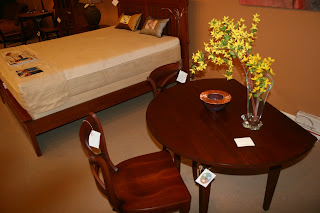Ecological Footprint (From the Past)
We would need 4.4 planets if everyone lived the way I do. Services contribute the most to my ecological footprint, making up nearly half of it; while food contributes the second most.
My Reduction Plans
In order to reduce my weekly carbon footprint during the quarter I will:
1. Recycle as many of my products as possible when getting rid of them, as well as purchase more recyclable goods. In general purchase less material goods, and try to consume less.
2. Use my utilities more efficiently: cutting back on the excess use of heat, water, and electricity. Making sure I turn lights off when I leave a room, take shorter showers and only use as much water as I need. Using less heat should be easier with the upcoming spring weather.
3. Buy more food locally and know where it is coming from. Also buy less packaged and processed food to eliminate the amount I waste from packaging as well as help eliminate toxins from entering my body.
4. Reduce the amount of time I drive alone, and car pool as much as possible. Also take the bus more often especially to and from campus.If I am able to implement all of my reduction plans, even a slight bit, I can better help the Earth and its resources to sustain. I hope taking these steps can help me become a stronger advocate for promoting sustainability and make myself and others become more aware of the affect we can have on the planet.
If I am able to implement all of my reduction plans, even a slight bit, I can better help the Earth and its resources to sustain. I hope taking these steps can help me become a stronger advocate for promoting sustainability and make myself and others become more aware of the affect we can have on the planet.
Ecological Footprint Reduction (Present)
At the beginning of the quarter my ecological footprint and impact on my environment was fairly large. If everyone lived like I did, I found that it would take 4.4 Planet Earths to provide us enough resources. After retaking the ecological footprint at the end of this term I have found that I’ve been successfully able to reduce it from 4.4 to 4.1 planets needed.
I was able to reduce my Ecological Footprint by:
- Eating more local and buying less packaged food
- Reducing the amount of trash and increasing recycling
- Carpooling more often, and utilizing the bus system instead of driving
- Making sure I save more electricity by turning lights off more often
- Saving water by taking shorter showers
Services and Food still account for the majority of my footprint, making up about three quarters of it. In the future I will try to eat healthier, organic, and locally in order to reduce my footprint. However services will be very hard to reduce as I will most likely need to commute more for work as well as rely on things such as electricity to maintain my lifestyle and accomplish what I want. I will look into forms of alternative electricity and reduce the amount of items I have plugged in, as well as switches I have turned on, in order to reduce the amount of global acres of Earths productive area it takes to support my lifestyle.
http://www.footprintnetwork.org/en/index.php/GFN/page/calculators/
I think the footprint I used (link above) was not very accurate in its calculations because it asks very vague questions, such as do you have electricity? Without questioning where the electricity comes from, or how it is generated. I think a more detailed survey that includes more issues would be a better example of my true ecological footprint.













